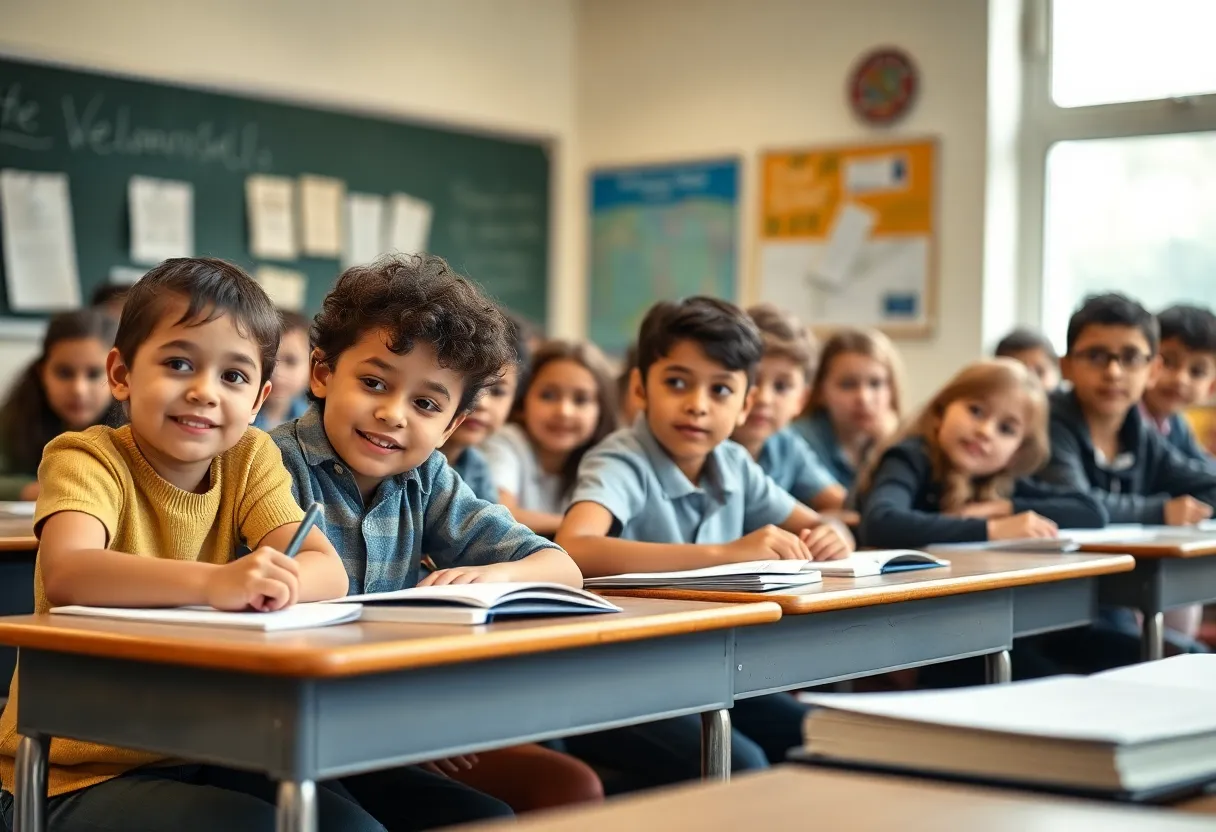Charleston, West Virginia, October 2, 2025
News Summary
Paul Hardesty, President of the West Virginia Board of Education, urges immediate legislative action to address public school funding as the debate over school choice continues. With a significant decline in enrollment, approximately 35,000 students have moved to private education or homeschooling, leading to potential financial challenges for public schools. Hardesty highlights the need for revisions to the school aid formula and equitable treatment across various educational options, including concerns about the growing Hope Scholarship program and its potential impact on public education stability.
Charleston, West Virginia — The President of the West Virginia Board of Education, Paul Hardesty, has called for immediate legislative action concerning public school funding and regulation as debates intensify around school choice and its effects on public education. Hardesty highlights a critical need for public understanding regarding the creation and enforcement of state education laws, emphasizing common misconceptions about the West Virginia School Laws book, which is not penned by the Board or the Department of Education.
Over the past decade, approximately 35,000 students have transitioned from public schools to private schools or opted for homeschooling—an indication of the growing reliance on school choice options. While Hardesty does not oppose the concept of school choice, he raises concerns about its implications for public school enrollment and funding stability. He has urged state lawmakers to revise the school aid formula to better support struggling public school systems amid declining enrollments.
There has been a significant shift in West Virginia’s educational landscape, with the number of public school students decreasing dramatically. Recent data indicates projections of fewer than 241,000 students enrolled in public schools for the current academic year. Hardesty notes that this decline is further exacerbated by a trend in school consolidations, where 16 public schools are expected to close in 2024, compared to nine closures in the previous year. The loss of students directly impacts funding, as the current formula allocates state resources according to enrollment figures.
In response to these issues, state legislators have provided mixed reactions. Senator Patricia Rucker asserts that the legislature should not be blamed for any under-enrollment issues linked to school choice, citing that school consolidations have been happening for decades. Delegate Joe Satlar acknowledges that finding viable solutions for the current school aid formula is both necessary and time-consuming, with a major overhaul on the horizon.
Hardesty also points to disparities in regulations that govern public schools, charter schools, and homeschooling, advocating for equal treatment across these educational avenues. One specific program, the Hope Scholarship, allows financial assistance for families opting for homeschooling or nonpublic education. This program currently has a budget of less than $100 million for the current school year, but it is anticipated to grow to approximately $245 million by the 2026-2027 academic year.
However, without proper oversight, Hardesty warns that programs like the Hope Scholarship pose a potential risk to the viability of public schools, which could lead to serious financial challenges. He emphasizes a concern that students facing the most significant difficulties are largely remaining in public schools, increasing the burden on these institutions, which already face significant challenges due to reductions in enrollment.
Legislative discussions about these concerns are expected to arise in future meetings. The next meeting of the West Virginia Board of Education is scheduled for November 12, 2025, providing an opportunity for stakeholders to address these ongoing issues.
Key Points
- 35,000 students have shifted from public education to alternatives over the last decade.
- Projecting fewer than 241,000 students in public schools this year.
- 16 public school closures projected for 2024.
- The Hope Scholarship program budget will increase from $100 million to $245 million by 2026-2027.
FAQ
What is the current state of public school enrollment in West Virginia?
Current projections indicate fewer than 241,000 students will be enrolled in public schools this academic year.
How many students have left public schools for alternative education in the last decade?
Approximately 35,000 students have transitioned to private education or homeschooling over the past ten years.
What are the expected closures of public schools in West Virginia?
There are projections of 16 public schools closing in 2024, an increase from the nine closures observed the previous year.
What is the Hope Scholarship and its budget expectations?
The Hope Scholarship provides financial assistance for homeschooling and nonpublic education, with a current budget of less than $100 million, expected to rise to approximately $245 million by the 2026-2027 school year.
Deeper Dive: News & Info About This Topic
HERE Resources
Roane County Board Moves to Consolidate Schools Amid Budget Crisis
Additional Resources
- WSAZ: West Virginia BOE President Calls for School Choice Guardrails
- News and Sentinel: West Virginia Board of Education President Challenges Lawmakers
- WOWK TV: West Virginia BOE President Urges Legislators on School Choice
- Wikipedia: Education in West Virginia
- K-12 Dive: Private School Choice Participation Increase
- Google Search: West Virginia Education Funding
Author: STAFF HERE PHOENIX WRITER
The PHOENIX STAFF WRITER represents the experienced team at HEREPhoenix.com, your go-to source for actionable local news and information in Phoenix, Maricopa County, and beyond. Specializing in "news you can use," we cover essential topics like product reviews for personal and business needs, local business directories, politics, real estate trends, neighborhood insights, and state news affecting the area—with deep expertise drawn from years of dedicated reporting and strong community input, including local press releases and business updates. We deliver top reporting on high-value events such as the Waste Management Phoenix Open, Cactus League Spring Training, and Arizona State Fair. Our coverage extends to key organizations like the Greater Phoenix Chamber of Commerce and Visit Phoenix, plus leading businesses in technology and healthcare that power the local economy such as Intel and Banner Health. As part of the broader HERE network, including HERETucson.com, we provide comprehensive, credible insights into Arizona's dynamic landscape.





